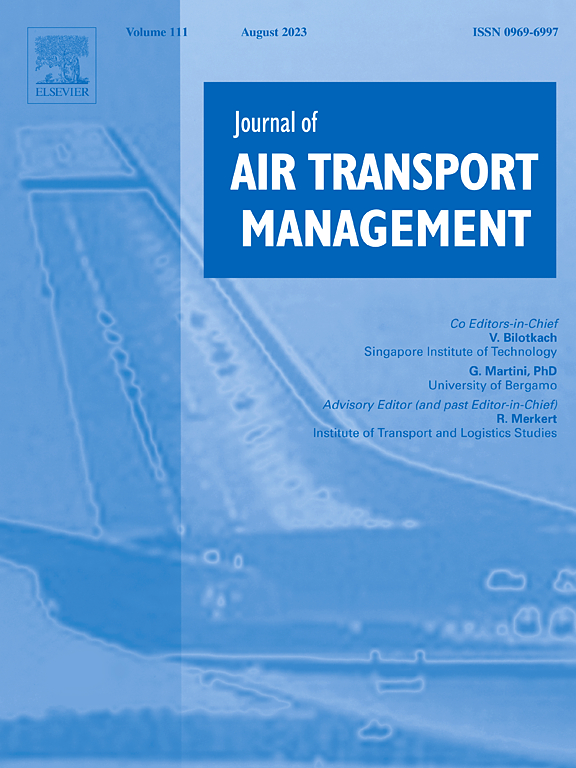数据驱动的空中交通管理应用的多智能体学习
IF 3.6
2区 工程技术
Q2 TRANSPORTATION
引用次数: 0
摘要
近年来,空中交通管理(ATM)数据驱动模型的研究引起了人们极大的兴趣。然而,众所周知,数据驱动模型的训练时间长,需要大量的数据集才能达到良好的性能,并且大多数提出的数据驱动模型都忽略了ATM系统的多智能体特性。为了填补研究空白,本文提出了一种多智能体双向编码器表示(Multi-Agent Bidirectional Encoder Representations from Transformers, MA-BERT)模型,该模型充分考虑了ATM系统的多智能体特性,并基于空域中所有智能体输出结果。此外,与大多数为单一应用设计的数据驱动模型相比,所提出的MA-BERT编码器架构使其能够通过自监督方法进行预训练,并针对各种数据驱动的ATM应用进行微调,从而节省了大量的训练时间和数据使用。利用2019年在韩国三个机场记录的自动相关监视广播(ADS-B)数据,对拟议的MA-BERT进行了测试,并与其他广泛使用的模型进行了比较。结果表明,与比较模型相比,MA-BERT可以获得更好的性能,并且通过在主要机场的大型数据集上预训练MA-BERT,然后对其进行微调,可以节省大量的训练时间。对于新采用的程序和没有历史数据的新建机场,结果表明,预训练的MA-BERT可以通过少量数据定期更新来获得高性能。本文章由计算机程序翻译,如有差异,请以英文原文为准。
Multi-agent learning for data-driven air traffic management applications
Research in developing data-driven models for Air Traffic Management (ATM) has gained tremendous interest in recent years. However, data-driven models are known to have long training time and require large datasets to achieve good performance, and the majority of proposed data-driven models ignores ATM system’s multi-agent characteristic. To fill the research gaps, this paper proposes a Multi-Agent Bidirectional Encoder Representations from Transformers (MA-BERT) model, which fully considers the multi-agent characteristic of the ATM system and outputs results based on all agents in the airspace. Additionally, compared to most data-driven models that are designed for a single application, the proposed MA-BERT’s encoder architecture enables it to be pre-trained through a self-supervised method and fine-tuned for a variety of data-driven ATM applications, saving a substantial amount of training time and data usage. The proposed MA-BERT is tested and compared with other widely used models using the Automatic Dependent Surveillance-Broadcast (ADS-B) data recorded in three airports in South Korea in 2019. The results show that MA-BERT can achieve much better performance than the comparison models, and by pre-training MA-BERT on a large dataset from a major airport and then fine-tuning it to other airports and applications, a significant amount of the training time can be saved. For newly adopted procedures and constructed airports where no historical data is available, the results show that the pre-trained MA-BERT can achieve high performance by updating regularly with small amount of data.
求助全文
通过发布文献求助,成功后即可免费获取论文全文。
去求助
来源期刊

Journal of Air Transport Management
TRANSPORTATION-
CiteScore
12.40
自引率
11.70%
发文量
97
期刊介绍:
The Journal of Air Transport Management (JATM) sets out to address, through high quality research articles and authoritative commentary, the major economic, management and policy issues facing the air transport industry today. It offers practitioners and academics an international and dynamic forum for analysis and discussion of these issues, linking research and practice and stimulating interaction between the two. The refereed papers in the journal cover all the major sectors of the industry (airlines, airports, air traffic management) as well as related areas such as tourism management and logistics. Papers are blind reviewed, normally by two referees, chosen for their specialist knowledge. The journal provides independent, original and rigorous analysis in the areas of: • Policy, regulation and law • Strategy • Operations • Marketing • Economics and finance • Sustainability
 求助内容:
求助内容: 应助结果提醒方式:
应助结果提醒方式:


